Twitter has long had a sensitive content setting you can use for your profile. If you plan to share adult content, it’s generally recommended that you enable this setting to avoid Twitter suspending your account. It’s a way for Twitter to allow adult-themed profiles without needing to block the people who would like to use the site.
Because of this, Twitter is one of the few social networks that can be broadly used by porn stars, adult product production companies, the sites that distribute such content, and people who are simply enthusiasts of adult content. It’s a great benefit to Twitter to allow a unique audience other sites don’t, but it does lead to an interesting set of settings.
Don’t worry; I’ll cover the automatic filter as well, just bear with me.
Account Settings
The sensitive content warning applies on both sides of the coin. If you’re an account that wants to post sensitive or adult content, you can flag yourself. Meanwhile, if you’re an account that does not want to see such content, you can filter it.
From the poster side, it’s highly recommended that if you want to post sensitive content, you flag your account. This prevents you from potentially having the flag forced on you, or from having your account suspended.
Keep in mind that Twitter is a platform used by a wide variety of people. Many people browse it at work, where seeing sensitive content could jeopardize their jobs, even if they aren’t directly seeking it out. It’s used by children, above the minimum legal age of 13 but under the legal age of consent at 18, and showing them adult content is not legal.
If you intend to post adult content, go to your Twitter account and go to settings. Under settings there will be a bunch of sub-categories. You’re looking for the Privacy and Safety settings. In that page, down all the way at the bottom under the Safety section, you’ll see a “tweet media” section with two boxes. The second of those boxes is “Mark media you Tweet as containing material that may be sensitive.” This is what you want to enable, make sure is checked, and save your settings.
What this does is flag your account as a potentially adult account. It has no impact on what you can and cannot tweet, but it does protect you in the case of people reporting media they don’t want to see. So long as the media you’re posting is actually legal, Twitter won’t take action and will instead inform the reporting user about their own security settings.
If you’re a user in a situation where you do not want to see adult or sensitive content in your feed, or in your search results, you have your own responsibility. By default, sensitive media is visible to every account above the age of 18 as determined by birthday settings when you register. It is also, however, filtered from search results by default. These are both settings you can change.
To change these settings, you need to go to the same place as the previous step. That is, go to your account settings, go into the Privacy and Security settings, and scroll down to the Safety settings. There are two relevant settings here. One is “Hide sensitive content” under the Search section. If this is checked, it means that when you run a search, even for an adult keyword, you won’t see any sensitive content that is flagged as sensitive content.
The second setting is just below, in the Tweet media section. It’s “Display media that may contain sensitive content.” If this box is checked, it means that you will see sensitive media when it is displayed on your Twitter feed. Feed and search work under different systems, so you can have one enabled and one disabled, or both enabled or disabled, as per your own preferences and your legal status as an adult.
What a Sensitive Content Warning Does
As you can see, if your account is flagged to have its media listed as sensitive, it means that a significant portion of the Twitter userbase will not see that media. It will not appear in search, and it will not appear in organic feeds to users who do not allow it.
This only applies to media tweets, not text-only tweets. However, it DOES apply to ALL media tweets, regardless of the actual content of the tweet. You could post a picture of a puppy under a rainbow and it would be marked as sensitive because everything on your account is marked as sensitive.
What this means is that media tweets on your account get a lot less exposure than they would if you were not flagged as an adult account. Plenty of users either do not want to see such content or are legally not allowed to see such content, and Twitter doesn’t want to get into any legal hot water.
This is important because of Twitter’s tests for a new flagging system.
Twitter’s Flags
Again, Twitter does not want to get caught in any kind of legal hot water. They allow users to report any tweet on the platform they want, for a variety of reasons that range from “I’m not interested in this” to “the content of this tweet is abusive.”
When a tweet is reported, Twitter reviews it manually to determine whether or not it’s a problem. A lot of people report tweets they don’t like as spam, for example, even if they aren’t spam. Twitter isn’t going to filter a divisive opinion just because someone doesn’t like it. They’re perhaps too lenient, as seen with all the Nazi stuff floating around.
When media is reported as sensitive content, and it turns out to actually BE sensitive content, Twitter will take action.
- If the content is a Live Video or archive of a Live Video, Twitter will likely simply remove it.
- If the content is static media, like an image or a gif, Twitter will mark the media as potentially sensitive.
- If the account is not marked as sensitive already, Twitter will forcefully enable that setting.
Additionally, if your account setting is changed due to such a report, you will receive an email stating as such. You are free to then turn off the setting, but any images or other media that has been marked as sensitive will remain marked as sensitive.
Twitter also gives you a warning. If you disable the sensitive content warning and continue to post untagged sensitive content, and Twitter continues to get reports about it, they will take stronger action. They may re-enable the setting, and they may make that setting permanent.
If Twitter forcefully marks your account as sensitive and removes your ability to disable it, they may also take things one step further and force any user who wants to view your feed to click an acceptance of the sensitive content. This can be devastating to a brand account, so avoid getting caught with repeat offenses whenever possible.
It should be noted that Twitter also has automatic content filters that look for adult or sensitive content and make sure it’s tagged. You don’t necessarily need to be reported; they can find you on their own as well.
Disabling the Filter
There has been some evidence that Twitter has been a little overzealous in testing their automated filters or their sensitive content flags in the last few months. Justin Warren, a writer for Mashable, had this happen to him. Warren did not know it had happened to him until someone told him, and his speculation was that it was simple swearing that triggered the filter.
If your account has been hit by the filter, it’s easy to disable it, as mentioned above. Simply go to your account settings, then to your Privacy and Safety settings, and scroll down to the very bottom where the “mark media I post as sensitive” box is checked. Uncheck that box, and the warning will be removed from your account.
Keep in mind, however, that if you continue to post sensitive content, stronger action can be taken against you. It’s highly recommended that you figure out what content you posted that was flagged as sensitive.
What Does Twitter Consider Sensitive?
Sensitive content includes three primary categories. These are Violence, Adult Content, and Hateful Content.
Violence typically refers to depictions of graphic violence. Twitter defines it as things like “the moment at which someone dies” and “gruesome crime or accident scenes.” Anything that shows a graphic depiction of bodily harm, dismemberment, death, mutilation, or any such violence is considered sensitive content. For the most part, this kind of content is not allowed even behind sensitive content tags.
Exceptions to this rule include simulated violence, like an advertisement for an HBO show or a violent video game. Twitter is content to allow these to exist behind the sensitive content warning.
As far as adult content goes, you know the standard definitions here. Anything that includes full or partial nudity outside of an artistic, health, medical, or educational context, anything that involves simulated or actual sexual acts, and so on.
Adult content is perhaps the most accepted form of sensitive media on Twitter, or at least will be by the end of November. Graphic sexual content is allowed frequently, so long as it is not in a header, profile image, or live video. It absolutely must be marked as sensitive media, but it won’t be deleted and you won’t be banned for posting it.
Hateful content is the newest filter being added to Twitter in late November. It’s an effort primarily to combat hate speech and hate symbols, like the proliferation of Nazi speech and imagery that Twitter has been lax in fighting in recent years. Some hateful content may still be allowed behind sensitive content tags – like the swastika used in Bethesda’s advertisements for Wolfenstein – but for the most part, Twitter will be using it as an excuse to purge hateful speech from their site.
What you might notice throughout all of this is that the rules allow content that is not harmful to anyone, like video games or consensual sex, while banning content that is hurtful. The death of a person can be emotionally scarring, and for the family of the person who died, it can be devastating to see that content circulation. Hate speech, meanwhile, is defined as speech about hating, inciting violence against, or otherwise suppressing people due to their attributes. When the content is harmful to individuals or groups of people, it’s not worth having on the site.
If you’ve been filtered automatically, these are the categories of content that may have triggered it. The above example of someone speculating that they swore and were filtered for it could be true, or it could involve media that was since deleted; we don’t know. If swearing is the cause, I would venture to guess the person in question was swearing AT someone, in a way that could be construed as bullying or violence.
A Footnote
As a final note, you don’t have to worry about this in an advertising context. Twitter has their own, more strict rules about advertising with adult content. Everything mentioned above, plus a bit more, is blanket banned in advertising. You might get a little risqué content if Twitter thinks you’re interested in it, but for the most part, everything is filtered and the ads don’t get approved.
For reach reasons, it’s obviously better to avoid any kind of sensitive content, which does mean you need to stay away from certain kinds of topics and language. Media is the largest offender, but it’s also the easiest to avoid. Just don’t share porn on your brand account, you know?
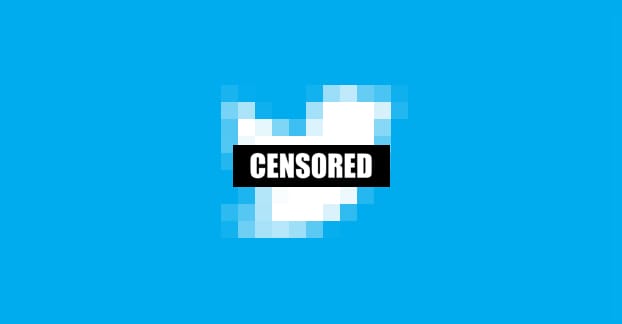
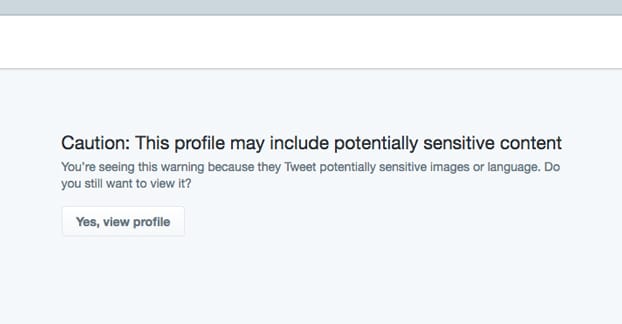

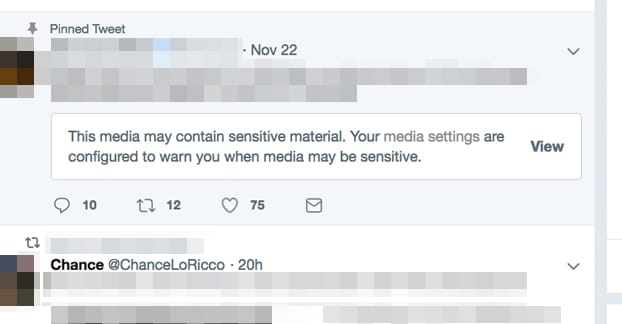
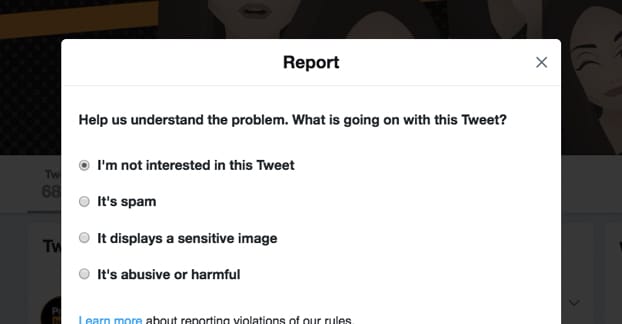
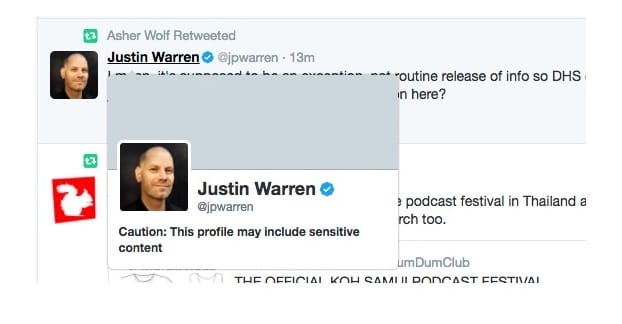
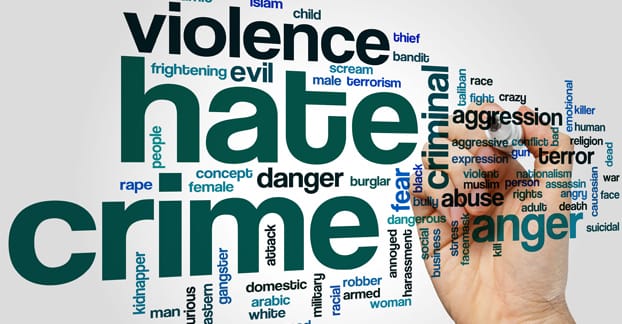




I have a moment that was blocked completely. Every week I post a compilation of the funniest tweets of the week, and all of a sudden nobody can see it! This really sucks. I don’t know what I did that was offensive. What do I do? CAN ANYONE HELP?
With latest Twitter update where do you *allow* potentially sensitive content?
I have a specific issue with my own tweets’ images… I cannot visualise my own images because,Twitter says so, the image includes contents I’ve chosen to not visualise” but I did nothing like that and I cannot find any way to fix that. Do you have any suggestion? Twitter Support seems unable to give me a proper answer and fix this problem of mine. I don’t know what to do anymore,I don’t want to give the permission to myself for seeing my own images, that’s real crazy nonsense! Thanks. Cheers!
I just want to know how to make the filter ACTUALLY WORK. I constantly see perfectly innocent pictures marked as sensitive content, and yet disgusting hardcore pornographic images are right there in my damn face without any way to prevent it. I’m getting very close to deleting my entire account, I am tired of seeing this disgusting stuff.
Twitter relies on the reporting of it’s users for content that isn’t flagged as sensitive content. If you see content like this, simply report it. If a user is caught tweeting content enough times that is sensitive, without marking it as such, their entire profile will be flagged as sensitive so all of their tweets will show a permanent warning. They give users an option to flag content themselves appropriately, and if you aren’t diligent, they just flag the whole profile to improve people’s experience.